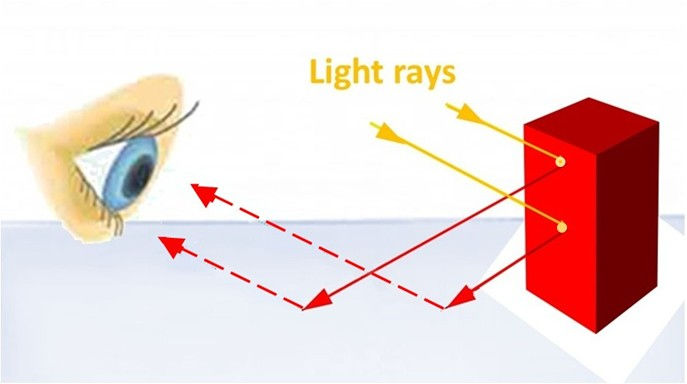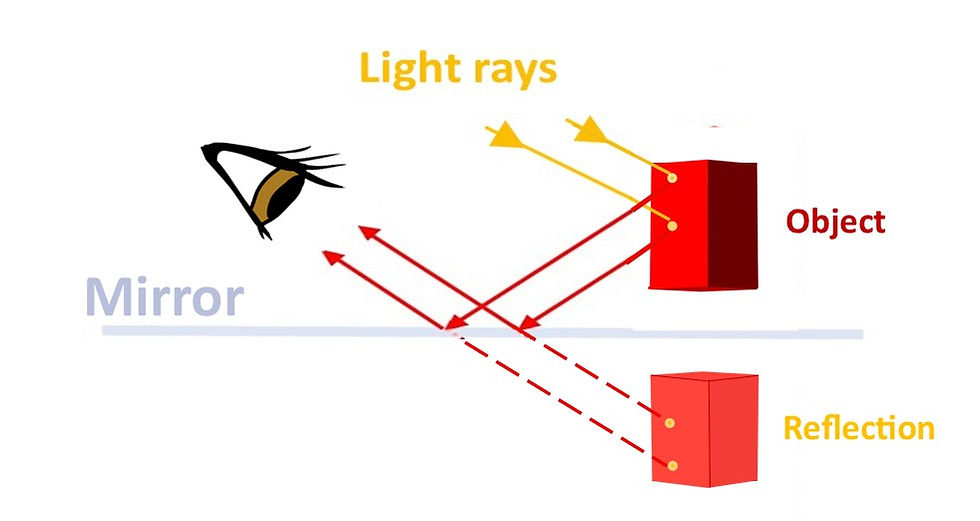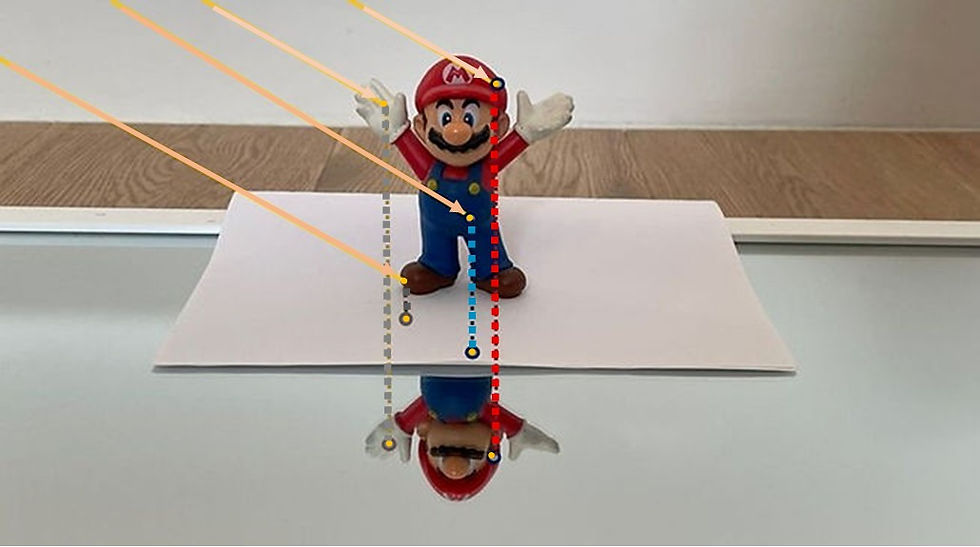How can a mirror reflect an object hidden from its view? Laws of optics
- Physics Core

- Apr 9
- 4 min read
Updated: Sep 17
Mirrors love messing with our heads, challenging us with deceptive illusions that can make us question our sanity. Being accomplished tricksters, they can leave us at the end of our wits, wondering, "How is this even possible?" One example is when a mirror demonstrates a spooky side by reflecting an object it shouldn't be able to see. In Fig. 1, a figurine is hidden from the mirror's view by a piece of paper. Yet, the mirror reflects the figurine, as if it had gone around the paper and taken a cheeky peek at what is on the other side.

A mirror creates images by reflecting light off its surface. While light doesn't pass through the surface, images appear to extend behind it. This optical deception is so convincing that our brain often struggles to differentiate between reality and illusion. In Fig. 1, a mirror deceives us into believing that a reflection extends beneath the figurine, when in fact, the reflection is formed on the mirror surface, placed at a 90° angle to the figurine.
Let's replace the figurine with a cuboid for simplicity and ignore, for a minute, a virtual image of the cuboid that our brain will create underneath the paper (Fig. 2). Here, we trace a trajectory of the light rays bouncing off the cuboid. Note that a ray reflected off the cuboid's top lands on the mirror farther away than the one reflected off its middle. These rays will next bounce off the mirror into the eye, contributing to the formation of a virtual image of the top and mid parts of the cuboid. The rays bouncing off the cuboid's base (not shown) will land closer to the cuboid, hitting the paper, thus blocking the mirror from 'seeing' the base.

Our ability to perceive objects and their mirror images is based on the same principle outlined in the law of reflection. Mirrors merely redirect the view we would see from their position to our eyes. This is why we perceive two objects in different locations: one real, which we see directly, and one illusory, which we would see from the mirror's position. Mirrors are unique in that they are designed to preserve the properties of the light they reflect. They don't alter the light's characteristics, such as wavelengths and angles of incidence. This unique feature allows them to replicate the real world so convincingly that many cultures attribute them supernatural power.
Since mirrors don't interfere with the light properties, keeping them intact, they act like phantoms, deceiving the brain into thinking that the reflected light comes directly from the object, with nothing standing between the object and the eye. The brain overlooks the presence of the mirrors (Fig. 3) and projects the light rays backward, much like it does when light comes directly from the object. As a result, a virtual image appears behind the mirror, identical to the real one, as it is constructed using the same information that defines the real image.

Mirrors are exceptional in their capacity to reflect light without altering the fundamental information carried by the rays. This feature is responsible for all mirror illusions. No other surface can equal a mirror in this ability. For example, placing the figurine on a polished steel surface would still produce a reflection, but its quality would be compromised because steel absorbs certain wavelengths and changes the original angles of incidence. Rough surfaces, like paper, perform even worse, destroying the original data by scattering wavelengths in all directions. The only information our eyes obtain from light reflected off the paper pertains to the paper itself. On such a surface, the figurine can only cast a shadow, which will stretch across the surface, clearly indicating where it belongs.
The paths of rays, hitting the figurine and reflected off it, are mapped in Fig. 4. Rays bouncing off the two points on the figurine's lower part land on the paper and are perceived as two points on the paper, because the information of the figurine's points is lost. Rays bouncing off the two points on the figurine's upper part land on the mirror and are perceived as the two points on the figurine, because the mirror doesn't manifest its presence and doesn't feed its personal information into the rays it reflects. If we removed the paper, a complete image would emerge, with the points on the paper matching those on the figurine. The mirror image would join the original at the feet and appear to extend beneath it, despite being stretched over the mirror surface. This optical illusion deceives us into thinking the figurine is hidden from the mirror's view, whereas in reality, the mirror receives complete information about the parts it displays.


Comments